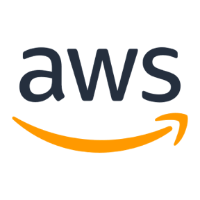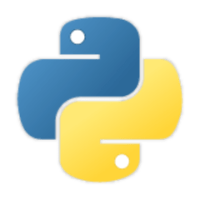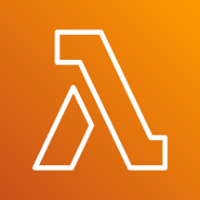[AWS CDK]L2コンストラクタを自作してuvでパッケージ管理をしているLambda/LambdaLayersをデプロイする
※検証時のuvのバージョンは0.5.2
標準ライブラリやboto3など、Lambdaに標準で組み込まれているものではない3rdパーティーライブラリを含めたPython Lambdaをデプロイしたいことがある。
cdkだと
などが存在するが、2024年11月時点ではuvには対応していないので、
uvでLambdaのパッケージ管理をしたい場合は工夫が必要になる。
先に結論
Lambda FunctionとLayerを作るL2コンストラクタをそれぞれ自作した例↓
uv-python-lambda.construct.ts
import { execSync } from 'node:child_process';
import { randomUUID } from 'node:crypto';
import fs from 'node:fs';
import process from 'node:process';
import { AssetHashType, DockerImage, aws_lambda as lambda } from 'aws-cdk-lib';
import type { Construct } from 'constructs';
type OmitKey = 'code';
export type PythonFunctionProps = Omit<lambda.FunctionProps, OmitKey> & {
readonly entry: string;
readonly build?: {
readonly image?: DockerImage;
};
};
export class PythonFunction extends lambda.Function {
constructor(scope: Construct, id: string, props: PythonFunctionProps) {
if (props.runtime && props.runtime.family !== lambda.RuntimeFamily.PYTHON) {
throw new Error('Only `PYTHON` runtimes are supported.');
}
super(scope, id, {
...props,
code: new lambda.AssetCode(props.entry, {
assetHashType: AssetHashType.OUTPUT,
bundling: {
image: props?.build?.image ?? DockerImage.fromRegistry('dummy'),
local: {
tryBundle: (outputDir, _options): boolean => {
const originalDir = process.cwd();
const tmpRequirementsTxtPath = `/tmp/requirements-${randomUUID()}.txt`;
process.chdir(props.entry); // uvプロジェクトのパスに移動
fs.cpSync(props.entry, outputDir, {
recursive: true,
filter: (source, _destination): boolean => {
if (source.includes('.venv/')) return false;
if (source.includes('.gitignore')) return false;
if (source.includes('uv.lock')) return false;
return true;
},
});
execSync(
`uv export --no-dev --frozen --no-editable --output-file ${tmpRequirementsTxtPath}`,
);
execSync('uv venv');
execSync(
`uv pip install -r ${tmpRequirementsTxtPath} --target ${outputDir} --quiet`,
);
fs.rmSync(tmpRequirementsTxtPath);
process.chdir(originalDir);
return true;
},
},
},
}),
});
}
}
export type PythonLayerVersionProps = Omit<
lambda.LayerVersionProps,
OmitKey
> & {
readonly entry: string;
readonly build?: {
readonly image?: DockerImage;
};
};
export class PythonLayerVersion extends lambda.LayerVersion {
constructor(scope: Construct, id: string, props: PythonLayerVersionProps) {
super(scope, id, {
...props,
code: new lambda.AssetCode(props.entry, {
assetHashType: AssetHashType.OUTPUT,
bundling: {
image: props?.build?.image ?? DockerImage.fromRegistry('dummy'),
local: {
tryBundle: (outputDir, _options): boolean => {
const originalDir = process.cwd();
const tmpRequirementsTxtPath = `/tmp/requirements-${randomUUID()}.txt`;
process.chdir(props.entry);
execSync(
`uv export --no-dev --frozen --no-editable --output-file ${tmpRequirementsTxtPath}`,
);
execSync('uv venv');
execSync(
`uv pip install -r ${tmpRequirementsTxtPath} --target ${outputDir}/python --quiet`,
);
fs.rmSync(tmpRequirementsTxtPath);
process.chdir(originalDir);
return true;
},
},
},
}),
});
}
}
- cdk標準で提供されている
lambda.Functionおよび、lambda.LayerVersionをそれぞれextendsし、ラップしたクラスを作ることで実装している。 -
LocalBundlingという機能を使うことでローカル環境にある
uvコマンドを使い、uv.lockファイルの内容からエクスポートしたrequirements.txtを使ってデプロイアセットを作成できるようにしている - 必要であればDockerfileを書いてより柔軟にアセット内容を作れるようにもしている
- いわゆるdev depenciesはアセット内容に含めないようにしており、余計なパッケージが含まれないようにできる
- (※後述するように色々改善の余地があるので、参考程度でお願いします)
みたいな内容で作っている。
使用感としては、
Lambda Function:
// (...)
import { PythonFunction } from './uv-python-lambda.construct';
export class CdkAppStack extends cdk.Stack {
constructor(scope: Construct, id: string, props?: cdk.StackProps) {
super(scope, id, props);
// (...)
// uvでパッケージ管理しているLambdaを宣言↓
new PythonFunction(this, 'python-lambda', {
functionName: 'hello-world-function',
runtime: lambda.Runtime.PYTHON_3_12, // ★uvで管理しているプロジェクトのpyproject.tomlおよび.python-versionの内容と整合させること
handler: 'index.handler',
entry: path.join(__dirname, '../python-lambda/hello-world'), // ★uvで管理しているプロジェクトのパス(※Lambdaのエントリポイントも同じ場所にあるとする)
});
// (...)
}
}
Lambda Layer:
// (...)
import { PythonLayerVersion } from './uv-python-lambda.construct';
export class CdkAppStack extends cdk.Stack {
constructor(scope: Construct, id: string, props?: cdk.StackProps) {
super(scope, id, props);
// (...)
// ↓uvで管理している3rdパーティーライブラリをPython Lambdaからインポートできる形式でLayerに配置
const dependenciesLayer = new PythonLayerVersion(this, 'PythonLayer', {
entry: path.join(__dirname, '../python-lambda/hello-world-with-layer'), // ★uvで管理しているプロジェクトのパス
compatibleRuntimes: [lambda.Runtime.PYTHON_3_12], // ★uvで管理しているプロジェクトのpyproject.tomlおよび.python-versionの内容と整合させること
compatibleArchitectures: [lambda.Architecture.X86_64],
});
new lambda.Function(this, 'python-function', { // 何らかのpython lambda
runtime: lambda.Runtime.PYTHON_3_12, // ★uvで管理しているプロジェクトのpyproject.tomlおよび.python-versionの内容と整合させること
code: lambda.Code.fromAsset(
// (...)
),
layers: [
dependenciesLayer, // ★↑で作成したLayerを追加することで、Lambdaから追加のライブラリをインポート可能にしている
],
});
// (...)
}
}
のような感じになり、
呼び出し元からはuv周りの複雑な処理を意識しないで済むようにできる。
解説
(検証環境について)
- OS: Linux x86_64(WSL2)
- Fedora41
- uv: v0.5.2
その他、細かいライブラリのバージョン情報などは
のリポジトリの内容を参照のこと
Lambdaにおける3rdパーティーライブラリへのパスの通し方
まず前提として、Lambda(Python)において、3rdパーティーライブラリをどう配置すればよいか(=どうするとパスを通せるか)という話がある。
それについては、
を参照すると記載されている。(他にも有用な情報が多くあるので、参考になる)
作成すべきデプロイアセット(簡単のためzipファイルと考える)に関して、
- Lambda Function: zip内のトップ階層にフラットに各ライブラリおよびエントリポイント(handlerを含むファイル)が配置
- Lambda layers: zip内の
python/ディレクトリ下に各ライブラリが配置
とすれば良い。
uv周り
uvのCLIリファレンス:
使うのは大きく2つで、
-
requirements.txtをエクスポートするuv export -
requirements.txtからライブラリをダウンロードし、指定した場所に格納するためのuv pip install
となる。それぞれ以下で補足する。
uv export
リファレンス:
色々オプションがあるが、ざっくり
uv export \
--no-dev \ # dev dependenciesを含まないようにする
--frozen \ # uv.lockファイルを更新しないようにする(uv.lockファイルは必ず存在する必要がある)
--output-file /tmp/requirements.txt # requirements.txtの出力先を指定(一時領域を指定しておき、後で消す)
みたいな感じにすれば、おそらく最低限動作する。
なお、--frozenは--lockedの方が良いかもしれない。
(その他、細かいオプションは見直し、調整の余地がある。)
uv pip install
リファレンス:
前節で作ったrequirements.txtを元に、所望のパッケージを所定の場所に配置する。
uvはpipの代替ツールとしても動作するため、素のpipではなくuvでpip installを行う。
内容としては大まかに
uv pip install \
-r /path/to/requirements.txt \ # requirements.txtのパスを参照
--target /path/to/target_dir \ # ダウンロードしたライブラリを格納する場所を指定する
--quiet # 余計なメッセージが表示されないようにする
といった感じ。
(先ほど同様、細かいオプション設定は調整の余地があると思われる)
bundling
実際にアセット内容を作る部分のコードについて
LocalBundling
Lambda FunctionでもLayersでも、デプロイされるアセットの中身はAssetCodeクラス:
によって記述することができる。
また、このコンストラクタのオプションにあるbundlingによってどうアセットを作るかを指定することができる:
プロパティに関して、imageが必須となっており、LocalBundlingに関わるlocalはオプションとなっているが、
declare;
entry: string; // パスの指定
new lambda.AssetCode(entry, {
bundling: {
image: DockerImage.fromRegistry("dummy"), // ★本来はdocker.ioなどのレジストリにある各イメージを指定するが、dummyなどと書いておくとdockerによるbundlingが起こらない
local: {
tryBundle: (outputDir: string): boolean => {
// ★outputDirにファイルやディレクトリを格納すると、それがLambda FunctionやLayersにデプロイされるアセット内容になる
// ★先ほどのuvのコマンドを参考に、適宜処理を書く
},
},
},
});
などのように書いておくと、dockerによるビルドではなく、ローカルのuvを使ってアセットを作るようにできる。
FunctionでもLayersでも内容はあまり変わらないので、Functionの場合のtryBundleの例を載せる:
tryBundle例
declare entry: string; // uvで管理しているLambdaのコードを管理しているプロジェクトのパス
new lambda.AssetCode(entry, {
assetHashType: AssetHashType.OUTPUT,
bundling: {
image: DockerImage.fromRegistry('dummy'),
local: {
tryBundle: (outputDir, _options): boolean => {
const originalDir = process.cwd();
const tmpRequirementsTxtPath = `/tmp/requirements-${randomUUID()}.txt`; // 念の為、衝突回避目的でuuidを名前に付加
process.chdir(entry);
fs.cpSync(entry, outputDir, { // ★Functionの場合、コード本体もoutputDirにいれる必要
recursive: true,
filter: (source, _destination): boolean => { // 不要なファイルは除外する
if (source.includes('.venv/')) return false;
if (source.includes('.gitignore')) return false;
if (source.includes('uv.lock')) return false;
// 他にも除外対象があれば適宜追加
return true;
},
});
execSync( // uv exportコマンドによるrequirements.txtの生成
`uv export --no-dev --frozen --no-editable --output-file ${tmpRequirementsTxtPath}`,
);
execSync('uv venv'); // git clone直後でvenv仮想環境が無い場合だとエラーになるので入れている
execSync( // uv pip installコマンドにより、outputDitに3rdパーティーライブラリを格納
`uv pip install -r ${tmpRequirementsTxtPath} --target ${outputDir} --quiet`,
);
fs.rmSync(tmpRequirementsTxtPath); // 不要になったrequirements.txtを削除
process.chdir(originalDir); // はじめの場所に戻らないとエラーになる
return true;
},
},
},
})
なお、Layersの場合、Lambda本体のソースコードは不要になるのでその部分が無くなるのと、
格納先が${outputDir}から${outputDir}/pythonに変わる、といった違いがでてくる。
(が、基本は全く同じ)
Dockerfileを使ったBundle
前節のlambda.AssetCodeの作成部分で、bundlingオプションのimage部分にDockerImageクラス:
のインスタンスを与えることで、今度はDockerを使ってアセットを作成するようにできる。
特に、DockerImage.fromBuild:
使うことで、指定したDockerfileの内容を元にアセットを作れる。
基本的な仕組みは
で書いているのでそちらも参照。
要点としては
を使うことで、Dockerfileによりアセット内容をほぼいくらでも自由に作ることができるので、
uvプロジェクト内の適当なファイルをDockerfileに渡して処理することでFunctionやLayerの中身を作っている、とう感じ。
Dockerfileでアセットを作る場合、
- Function:
/asset/直下に依存ライブラリを配置 - Layer:
/asset/python/直下に依存ライブラリを配置
とするとパスを通すことが出来る。
あまり改めて解説する要素は無いが一応実装例は
に置いてある。
(各ファイル抜粋)
Functionのアセットを作るDockerfile
FROM ghcr.io/astral-sh/uv:bookworm-slim
ENV PYTHON_VERSION=3.12
COPY ./ /asset/
WORKDIR /work
RUN uv export --no-dev --frozen --output-file /tmp/requirements.txt
RUN uv python install $PYTHON_VERSION && \
uv venv && \
uv pip install -r /tmp/requirements.txt --no-cache-dir --target /asset
Layerのアセットを作るDockerfile
FROM ghcr.io/astral-sh/uv:bookworm-slim
ENV PYTHON_VERSION=3.12
WORKDIR /work
RUN uv export --no-dev --frozen --output-file /tmp/requirements.txt
RUN uv python install $PYTHON_VERSION && \
uv venv && \
uv pip install -r /tmp/requirements.txt --no-cache-dir --target /asset/python
やっていることは相変わらず、
-
uv exportコマンドを使うことで、lockファイルの内容を反映させつつ不要なパッケージを除去したrequirements.txtを生成 - ↑で作った
requirements.txtを使い、uv pip installコマンドを使い、場所を指定してライブラリをインストール・配置
という感じ。
なお、ベースイメージにはastralが公開しているghcr.io/astral-sh/uv:
を使っている。
改善点
いくらでもあると思うが、とりあえず2点。
uvのgroup機能を使った柔軟なパッケージ管理
uv add(ライブラリのインストール)に関して、
のオプションを見ると、--groupなるものが存在する。
exportの方にもgroupに関するオプションが存在する(--group, --only-groupなど)
すなわち、インストールするライブラリに関して、必須ライブラリとそれ以外(dev dependencies)の2択ではなく、
より細かい単位でグループ分けすることができる。
例えば、Lambdaの開発で使うライブラリに関して、
- 必須: デプロイパッケージに含める必要あり
- AWS管理: 実行時に必要なライブラリだが、boto3などLambdaに初めから入っているためデプロイ内容に含める必要性無し
- Layer1: Lambda Layerその1にライブラリを分離してデプロイする
- Layer2: Lambda Layerその2にライブラリを分離してデプロイする
- 開発時のみ必要(dev dependencies)
- uv的には
devグループの別名扱いになる
- uv的には
みたいに分類して、関数本体と複数のLayerにパッケージをそれぞれ分けてデプロイする、といったことも可能性としてはできることになる。
が、きれいに対応して実装に落とし込むのは大変そうだったのと、個人的にそこまでは今のところ不要そうだったので、
先ほど書いた例にはこうした対応は含まれていない。
他にも、uvはworkspace機能:
などもあるので、そうした部分にも対応できるようになるとより良い感じになりそう?
複数言語(TypeScript以外)のサポート
cdkで作ったコンストラクタはjsii:
を使うことで、TypeScriptやJavaScript以外の言語からも使えるようになるとのこと。
個人的にはcdk自体のコードはTypeScriptで書ければ良いのでそこまで頑張っていないが、
PythonでLambdaを書くケースだとcdkの実装もpythonに合わせたいケースなどもあるのかもしれない。
Construct Hubなどに公開できるようなレベルの再利用性の高いコンストラクタを作るのであれば、
こちらも使ったことはないがprojen:
などを使うと良いのかもしれない。
参考
先行例:
Construct Hubに上がっていたもの。
まだ安定しているとは言えなかったり(uv自体も)、イメージ通りの挙動でない部分もあるので自分で作ることにしたが、
参考にはなりそう。
あと、@aws-cdk/aws-lambda-python-alpha
や、aws-cdk-lib/aws-lambda-nodejs
など、AWSの公式リポジトリで公開されている、lambda.FunctionをラップしているL2コンストラクタなどは実装の参考になる。
(比較的読みやすい部類に入るとは思う)





Discussion